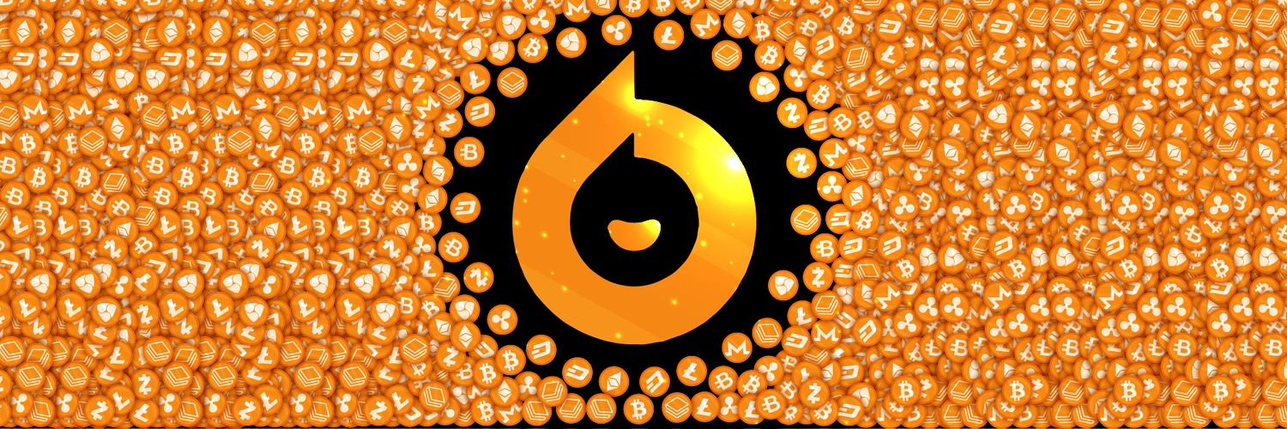


Terra priceLUNA
LUNA to USD converter
How do you feel about Terra today?
About Terra (LUNA)
What Is Terra?
Terra is a groundbreaking blockchain network, designed to revolutionize e-commerce and decentralized finance (DeFi). Originally launched in 2018 by Daniel Shin and Do Kwon, Terra aimed to combine the censorship-resistance attributes of cryptocurrencies like Bitcoin with the stability and widespread acceptance of fiat currencies. This vision was orchestrated through Terraform Labs, a spearheading entity in the cryptocurrency space. Terra made headlines and took center stage, becoming a prominent player in the rapidly evolving crypto sphere.
The journey of Terra, however, witnessed a significant setback in 2022. Following the unfortunate unstaking of a colossal sum of tokens amounting to $2 billion, the blockchain experienced a dramatic downturn. The result of this event were a depeg of the UST stablecoin, a blockchain collapse, and a substantial dip in the broader cryptocurrency market. In response to this, Do Kwon initiated a recovery strategy that involved a crucial hard fork, giving birth to a new blockchain, Terra 2.0, and a new version of its governance token, LUNA. This initiative separated the network into two distinct entities: the original Terra Classic and the new Terra, fostering a community of supporters aptly named “LUNAtics.”
Resources
Official Documents: https://docs.terra.money
Official Website: http://terra.money
How Does Terra Work?
Underpinning Terra's functionality is its unique blend of algorithmic stablecoins, pegged to a range of fiat currencies including USD, EUR, and KRW, among others. Unlike other stablecoins that maintain their value through reserves, Terra's stablecoins derive their stability algorithmically. This innovative approach aims to foster a seamless, cost-effective, and less volatile environment for decentralized commerce and finance, bridging the gap between the traditional financial world and the digital asset ecosystem.
In this renewed version, Terra operates without the UST stablecoin, distancing itself from the vulnerabilities that led to the downfall of Terra Classic. This new chapter in Terra's journey is guided by a vibrant community of developers who are steadfastly working on various decentralized applications, thereby propelling the Terra ecosystem into a future of financial innovation and inclusion.
To secure the network, Terra employs a proof-of-stake consensus mechanism grounded on the Tendermint protocol. Here, LUNA token holders play a pivotal role by staking their tokens to validate transactions, ensuring the network's safety and receiving rewards in proportion to their staked amount. This mechanism, complemented by an annual inflation rate of 7%, is designed to foster network security while aligning the interests of validators with the long-term prosperity of the Terra ecosystem.
What Is LUNA Token?
LUNA serves as the primary utility and governance token in the Terra ecosystem, acting as a vital component in the collateralization process of Terra's stablecoins. Initially, the Terra Classic blockchain utilized the LUNC (LUNA Classic) token, but following the 2022 hard fork, the new LUNA token emerged as the cornerstone of the revitalized Terra blockchain. Remarkably, LUNA does not have a fixed supply cap, enabling a dynamic collateralization mechanism that underpins the stability of the various stablecoins in the Terra ecosystem.
The launch of the new Terra blockchain marked a significant shift in the distribution of LUNA tokens, with an airdrop event that sought to restore balance and faith in the ecosystem. The new LUNA token has a total supply of 1 billion, distributed among various stakeholders, including developers and both pre and post-attack holders, following a well-structured allocation plan aimed at ensuring equitable distribution and fostering community engagement.
Terra's Impact on Finance
Despite its turbulent history, Terra stands as a beacon of innovation in the financial sector, embodying the potential to reshape the landscape of global finance. By focusing on stability and usability, Terra aims to accelerate the mass adoption of cryptocurrencies, presenting a viable alternative to traditional financial systems. Its pioneering approach to stablecoins, grounded in algorithmic mechanisms, could potentially revolutionize the way we perceive and use digital assets in e-commerce and decentralized finance.
Furthermore, Terra's commitment to community ownership, demonstrated by its recent shift to a fully community-owned chain, represents a promising step towards a decentralized financial future where control is redistributed from centralized entities to the wider community. This, coupled with its dedication to fostering a dynamic and inclusive ecosystem, places Terra at the forefront of the next wave of financial innovation, potentially heralding a new era of economic inclusivity and empowerment.
By continuously evolving and adapting, Terra exhibits a resilient and innovative spirit, demonstrating that even in the face of adversity, it remains committed to achieving its vision of a decentralized and stable financial ecosystem, thus carving a notable imprint in the annals of financial evolution.
What Determines Terra's Price?
In the dynamic world of cryptocurrency, understanding the factors that determine the price of revolutionary blockchain platforms like Terra is quintessential. Predominantly, the price of Terra's native token, LUNA, is governed by a blend of market demand and its intrinsic role within the Terra blockchain ecosystem. Like other cryptocurrencies, LUNA's valuation is often influenced by broader market trends, investor sentiment, and developments in the blockchain and DeFi space. These factors coalesce to dictate the fluctuating prices we observe in the cryptocurrency market charts, making it an ever-evolving focal point for investors and enthusiasts alike.
Within the intricacies of the Terra ecosystem, the LUNA token operates not only as a governance token but also as a stabilizing force for Terra's suite of algorithmic stablecoins. Its function as a collateral asset plays a pivotal role in maintaining the peg of these stablecoins, thereby directly influencing its demand and, consequently, its price. Moreover, LUNA's supply mechanism is algorithmically driven, meaning it doesn't adhere to a fixed cap, allowing for a fluid supply that adjusts based on market demands, fostering a harmonious equilibrium between demand and supply in the Terra network.
Furthermore, it's imperative to acknowledge the role of macroeconomic factors and regulatory developments in shaping LUNA's price trajectory. As Terra continues to forge partnerships and expand its ecosystem with new decentralized applications and financial products, the perceived value and utility of the LUNA token are likely to experience significant shifts. Investors keen on capitalizing on LUNA's potential growth should remain vigilant of the evolving landscape of the blockchain and cryptocurrency sectors, as these are primary determinants of Terra's price dynamics in the competitive digital asset market.
Related Articles about Terra
AI analysis report on Terra
Terra price today in USD
Terra price history (USD)
 Lowest price
Lowest price Highest price
Highest price 
What is the highest price of Terra?
What is the lowest price of Terra?
Terra price prediction
When is a good time to buy LUNA? Should I buy or sell LUNA now?
What will the price of LUNA be in 2026?
What will the price of LUNA be in 2031?
FAQ
What is Terra 2.0?
How is Terra 2.0 different?
What is LUNA price prediction?
What dApps will migrate or redeploy to Terra 2.0?
Who is eligible for LUNA airdrop?
How was Luna 2.0 airdropped after Luna 1.0 collapse?
What is the current price of Terra?
What is the 24 hour trading volume of Terra?
What is the all-time high of Terra?
Can I buy Terra on Bitget?
Can I get a steady income from investing in Terra?
Where can I buy Terra with the lowest fee?
Terra news
Terra updates
Guide to Bitget Earn Products
Country Roads, Take Me Home: BTC Surpassed US$72K, ETH Crossed US$4K
Trust Is What Brings People To Bitget
How Mint Cash Caused USTC To Soar 400%
Bitget Hot Takes (November 20 - November 26)
BGB Achieving New ATH In November
Mapping Bitcoin Crashes: When is the Right Time to Buy?
Unleashing Profit Potential: A Comprehensive Guide to Bitget Earn Products
Central Bank Digital Currency (CBDC): a Threat for Crypto?
Ethereum Value and Price (Part 1)
Terra market
Terra holdings
Terra holdings distribution matrix
Terra holdings by concentration
Terra addresses by time held

Global Terra prices
- 1
- 2
- 3
- 4
- 5
How to buy Terra(LUNA)

Create Your Free Bitget Account

Verify Your Account

Convert Terra to LUNA
Join LUNA copy trading by following elite traders.
New listings on Bitget
Buy more
Where can I buy Terra (LUNA)?
Video section — quick verification, quick trading

LUNA to USD converter
Terra ratings
Bitget Insights





Related assets
Additional info on Terra
Coin overview
Coin-related
Trade-related
Coin updates
Trade
Earn
LUNA/USDT
SpotLUNA/USDT
Margin

































Terra Social Data
In the last 24 hours, the social media sentiment score for Terra was 3, and the social media sentiment towards Terra price trend was Bullish. The overall Terra social media score was 4,516, which ranks 535 among all cryptocurrencies.
According to LunarCrush, in the last 24 hours, cryptocurrencies were mentioned on social media a total of 1,058,120 times, with Terra being mentioned with a frequency ratio of 0.01%, ranking 230 among all cryptocurrencies.
In the last 24 hours, there were a total of 745 unique users discussing Terra, with a total of Terra mentions of 124. However, compared to the previous 24-hour period, the number of unique users increase by 11%, and the total number of mentions has decrease by 36%.
On Twitter, there were a total of 5 tweets mentioning Terra in the last 24 hours. Among them, 0% are bullish on Terra, 0% are bearish on Terra, and 100% are neutral on Terra.
On Reddit, there were 1 posts mentioning Terra in the last 24 hours. Compared to the previous 24-hour period, the number of mentions decrease by 67% .
All social overview
3